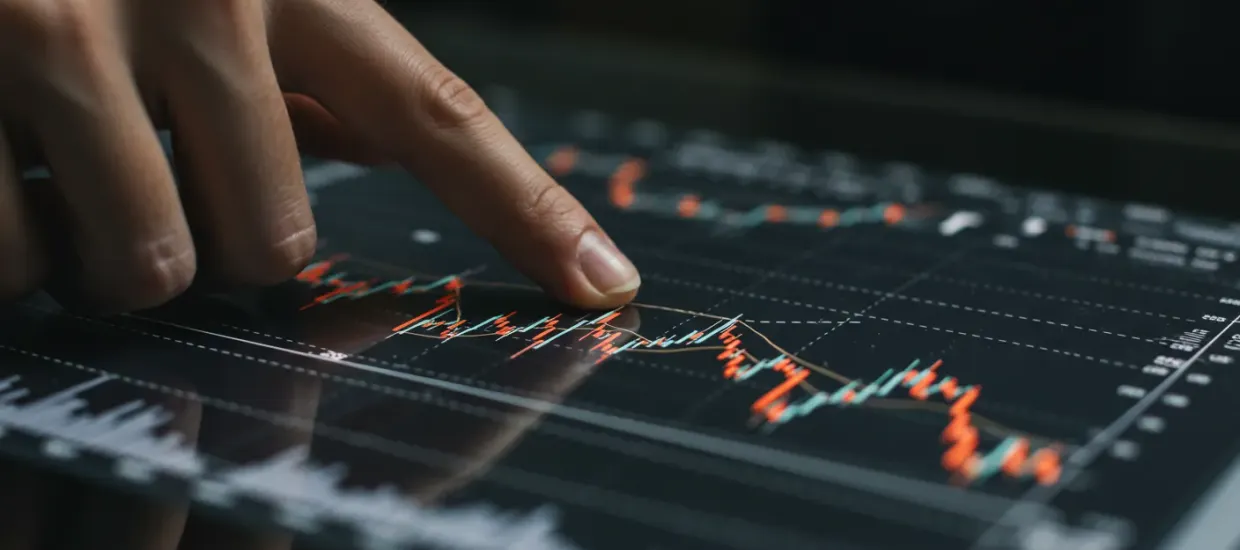- Economic Indicators. Assess the health of the economy using metrics like GDP, inflation, and unemployment rates.
- Financial Indicators. Evaluate company or market performance through metrics such as price-to-earnings ratios and ROI.
- Market Indicators. Track trends and sentiment with tools like stock indexes and trading volumes.
- Technical Indicators. Help traders analyze price patterns using tools like moving averages and RSI.
- Performance Indicators. Measure organizational efficiency, often through KPIs.
- Social Indicators. Reflect societal conditions, including literacy rates and income inequality.
- Environmental Indicators. Monitor sustainability through metrics like air quality and carbon footprints.
Indicators in Finance

Looking to make informed trading decisions and understand key investment tools? In this article, we explore how to analyze market trends, evaluate risks, and use financial Indicators effectively. Whether you're starting out or enhancing your strategy, you'll gain valuable insights to approach trading with confidence and a clear perspective on potential opportunities.
Indicators are vital tools in finance and economics, offering key insights into the health and performance of economies, markets, and businesses. By analyzing them, professionals can make better decisions, predict trends, and manage risks. Indicators are used across sectors like finance, economics, and business to simplify complex data and provide clear, actionable insights.
In finance and economics, Indicators are essential tools that provide insights into various aspects of markets, businesses, and the economy. Each type of Indicator serves a specific purpose, offering unique perspectives. Here’s a concise overview:
Indicators are versatile tools used across industries to guide decision-making and strategy. Here are key areas where they play a vital role:
- Economic Policy-making. Governments and central banks use economic Indicators like inflation and unemployment rates to shape monetary and fiscal policies.
- Investment Decisions. Investors analyze market Indicators to assess trends and sentiment, while financial and technical Indicators help evaluate company performance and time trades.
- Business Strategy. Companies rely on performance Indicators (KPIs) to measure efficiency and set goals.
- Risk Management. Indicators play a key role in identifying and mitigating risks by tracking market volatility, financial health, and external factors impacting businesses and investments.
- Social and Environmental Monitoring. Policymakers and organizations use social and environmental Indicators to address societal issues like income inequality or sustainability challenges, ensuring informed and effective solutions.
Indicators are vital tools for making informed decisions across industries. Their value lies in the ability to:
- Provide Objective Measurements. Indicators deliver quantifiable data, minimizing the impact of biases and assumptions. For instance, KPIs in business provide clear metrics to assess team or departmental performance, while GDP and inflation rates offer standardized measures of economic progress.
- Facilitate Comparisons. They allow for meaningful comparisons between companies, regions, or time periods.
- Identify Trends and Patterns. Indicators reveal patterns that help businesses and policymakers anticipate changes.
- Support Evidence-based Decisions. By offering reliable data, Indicators ensure decisions are grounded in facts. This is crucial for setting strategies in dynamic environments like financial markets or policy development.
- Monitor Performance and Progress. Indicators help track success and adjust strategies.
While Indicators are essential tools, their application comes with certain challenges and limitations:
- Data Quality and Reliability. Indicators rely on accurate data, but errors or incomplete datasets can lead to flawed insights. Challenges like inconsistent data collection or changing calculation methods can make long-term comparisons difficult.
- Interpretation Complexity. Understanding Indicators often requires expertise. For instance, a rising stock market index doesn’t always signal economic health—it might reflect temporary factors like low interest rates. Similarly, relying on a single economic Indicator like GDP can overlook important issues like income inequality or sustainability.
- Time Lag and Oversimplification. Many Indicators, especially economic ones, are reported with a delay, limiting their real-time relevance.
- Overreliance on Single Indicators. Focusing too much on one Indicator, such as inflation or unemployment, can miss broader trends.
Indicators are essential tools across finance, economics, and other fields, offering measurable insights that support informed decision-making and trend analysis. They help policymakers, investors, and businesses better understand markets, economies, and societal dynamics. However, their value depends on careful interpretation, considering multiple factors, and acknowledging limitations.
As data analysis technologies evolve, Indicators will play an even larger role in shaping strategies and outcomes. By understanding their types, applications, and challenges, professionals can use Indicators effectively to make smarter decisions and achieve meaningful results.
FAQ
What are the most commonly used economic Indicators?
Common economic Indicators include GDP growth rate, inflation rate, unemployment rate, consumer price index (CPI), and trade balance.
How often are Indicators typically updated?
Update frequency varies by Indicator. Some, like stock market indexes, update in real-time, while others, like GDP, may be updated quarterly.
Can Indicators predict future economic conditions?
While Indicators can suggest trends, they are not definitive predictors. They should be used alongside other analytical tools for forecasting.
Are there global standards for calculating Indicators?
Many international organizations, like the IMF and World Bank, provide standardized methodologies for calculating certain Indicators to ensure comparability.
How do social media and big data impact the use of Indicators?
Big data and social media have led to the development of new, real-time Indicators that can provide rapid insights into market sentiment and social trends.